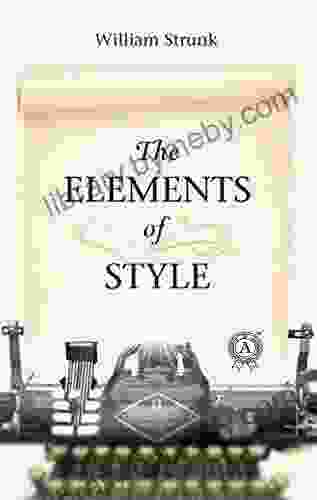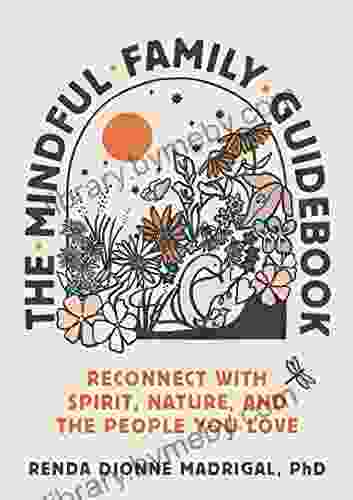Master the Art of Writing with "The Elements of Style"

4.5 out of 5
| Language | : | English |
| File size | : | 925 KB |
| Text-to-Speech | : | Enabled |
| Screen Reader | : | Supported |
| Enhanced typesetting | : | Enabled |
| Word Wise | : | Enabled |
| Print length | : | 85 pages |
The Enduring Legacy of a Writing Masterpiece
In the vast and ever-evolving world of writing, a select few works stand as timeless beacons of excellence. Among these literary luminaries, "The Elements of Style" by William Strunk Jr. and E.B. White shines with an enduring brilliance that has captivated generations of aspiring writers.
First published in 1919, this concise yet profound guide has become an indispensable resource for writers of all levels. Its simple, straightforward principles have shaped the writing style of countless authors, from journalists and academics to novelists and poets.
Unveiling the Elements of "The Elements of Style"
At the heart of "The Elements of Style" lie a set of fundamental principles that guide clear, concise, and effective writing. These principles are organized into four parts:
Part 1: Elementary Rules of Usage
This section focuses on the basics of grammar, punctuation, and usage. It covers rules for capitalization, hyphenation, and the use of commas, periods, and other punctuation marks.
Part 2: Elementary Principles of Composition
Here, Strunk and White delve into the principles of effective sentence structure, paragraph development, and overall organization. They emphasize the importance of clarity, coherence, and emphasis.
Part 3: A Few Matters of Form
This part addresses the practical aspects of writing, such as the use of footnotes, quotations, and numbers. It also provides guidelines for writing letters, reports, and other specific types of writing.
Part 4: Words and Expressions Commonly Misused
The final section is a comprehensive list of words and phrases that are often misused or confused. It clarifies the correct usage and meaning of these terms, helping writers avoid common writing pitfalls.
The Power of Simplicity
One of the most striking aspects of "The Elements of Style" is its simplicity. Strunk and White believed that effective writing should be clear, concise, and direct. They eschewed flowery language and complex constructions in favor of a straightforward approach that emphasized clarity and precision.
This focus on simplicity has made "The Elements of Style" a valuable tool for writers of all backgrounds and levels. Its principles can be applied to any writing task, from a simple email to a complex research paper.
Examples and Applications
To illustrate their principles, Strunk and White provide numerous examples of clear and effective writing. They also include exercises at the end of each section, allowing readers to test their understanding and apply the concepts to their own writing.
For example, in the section on sentence structure, they offer this advice:
Use active voice instead of passive voice.
Place the subject and verb as close together as possible.
Avoid unnecessary modifiers.
By following these guidelines, writers can create sentences that are clear, concise, and impactful.
A Timeless Influence
"The Elements of Style" has had a profound impact on the world of writing. Its principles have been adopted by generations of writers and educators. It has been translated into more than 20 languages and is considered a staple of writing instruction worldwide.
Many famous authors have acknowledged the influence of "The Elements of Style" on their writing. George Orwell, Ernest Hemingway, and John McPhee are just a few of the literary giants who have praised its clarity and simplicity.
Whether you're an aspiring writer or a seasoned professional, "The Elements of Style" is an essential tool that can help you improve your writing skills. Its straightforward principles, practical examples, and timeless wisdom provide a roadmap to writing that is clear, concise, and effective.
By embracing the lessons of "The Elements of Style," you can elevate your writing to new heights and communicate your ideas with clarity and elegance.
Invest in a copy of this timeless classic today and embark on a literary journey that will transform your writing forever.
Part 1: Elementary Rules of Usage
This section of "The Elements of Style" covers the basic rules of grammar, punctuation, and usage. It includes guidelines for:
- Capitalization
- Hyphenation
- Commas
- Periods
- Semicolons
- Colons
- Quotation marks
- Apostrophes
By following these rules, you can ensure that your writing is grammatically correct and easy to understand.
Part 2: Elementary Principles of Composition
In this section, Strunk and White focus on the principles of effective sentence structure, paragraph development, and overall organization. They discuss:
- Sentence clarity
- Sentence variety
- Paragraph structure
- Transition words
- Emphasizing key points
By applying these principles, you can write clear, coherent, and well-organized text.
Part 3: A Few Matters of Form
This section addresses the practical aspects of writing, such as:
- Footnotes
- Quotations
- Numbers
- Letter writing
- Report writing
By following these guidelines, you can ensure that your writing meets the standards of professional communication.
Part 4: Words and Expressions Commonly Misused
The final section of "The Elements of Style" is a comprehensive list of words and phrases that are often misused or confused. It clarifies the correct usage and meaning of these terms, including:
- Accept/except
- Affect/effect
- All ready/already
- A lot/alot
- Between/among
By consulting this list, you can avoid common writing pitfalls and ensure that your writing is accurate and precise.
4.5 out of 5
| Language | : | English |
| File size | : | 925 KB |
| Text-to-Speech | : | Enabled |
| Screen Reader | : | Supported |
| Enhanced typesetting | : | Enabled |
| Word Wise | : | Enabled |
| Print length | : | 85 pages |
Do you want to contribute by writing guest posts on this blog?
Please contact us and send us a resume of previous articles that you have written.
 Book
Book Novel
Novel Page
Page Chapter
Chapter Text
Text Story
Story Genre
Genre Reader
Reader Library
Library Paperback
Paperback E-book
E-book Magazine
Magazine Newspaper
Newspaper Paragraph
Paragraph Sentence
Sentence Bookmark
Bookmark Shelf
Shelf Glossary
Glossary Bibliography
Bibliography Foreword
Foreword Preface
Preface Synopsis
Synopsis Annotation
Annotation Footnote
Footnote Manuscript
Manuscript Scroll
Scroll Codex
Codex Tome
Tome Bestseller
Bestseller Classics
Classics Library card
Library card Narrative
Narrative Biography
Biography Autobiography
Autobiography Memoir
Memoir Reference
Reference Encyclopedia
Encyclopedia Rob Greenfield
Rob Greenfield Lelia O V Hinton Crowders
Lelia O V Hinton Crowders Owen Jones
Owen Jones Tomer Rosen Grace
Tomer Rosen Grace Lynnette Khalfani Cox
Lynnette Khalfani Cox Robert Jay Lifton
Robert Jay Lifton Mary Englar
Mary Englar Paul Seydor
Paul Seydor Ronald Rompkey
Ronald Rompkey Tim Slessor
Tim Slessor William Rose
William Rose Maria Thompson Daviess
Maria Thompson Daviess Larissa Larsen
Larissa Larsen Laurie Gwen Shapiro
Laurie Gwen Shapiro Robert Sears Md
Robert Sears Md Master Sajid Ahmed
Master Sajid Ahmed Zoe Sharp
Zoe Sharp Tom Fields Meyer
Tom Fields Meyer Linda Babcock
Linda Babcock Will Jawando
Will Jawando
Light bulbAdvertise smarter! Our strategic ad space ensures maximum exposure. Reserve your spot today!

 Joshua ReedUnlock the Secrets: The Best Guide Tricks Tips And More - Your Ultimate Path...
Joshua ReedUnlock the Secrets: The Best Guide Tricks Tips And More - Your Ultimate Path...
 Colt SimmonsVietnam Forgotten Army: The Untold Story of the Vietnamese People's Army of...
Colt SimmonsVietnam Forgotten Army: The Untold Story of the Vietnamese People's Army of... Mark MitchellFollow ·4.6k
Mark MitchellFollow ·4.6k Henry JamesFollow ·17.8k
Henry JamesFollow ·17.8k Esteban CoxFollow ·13.3k
Esteban CoxFollow ·13.3k Maurice ParkerFollow ·11.2k
Maurice ParkerFollow ·11.2k Art MitchellFollow ·14.8k
Art MitchellFollow ·14.8k Henry HayesFollow ·2.1k
Henry HayesFollow ·2.1k Rex HayesFollow ·11.7k
Rex HayesFollow ·11.7k Liam WardFollow ·7.7k
Liam WardFollow ·7.7k

 Clay Powell
Clay PowellDiscover the Enigmatic Beauty and Profound Meaning in...
An Exploration of Emptiness, Fulfillment,...

 Brenton Cox
Brenton CoxThe Life and Times of the Woman Who Changed Abortion: The...
Norma McCorvey, the woman known...

 Darius Cox
Darius CoxBest 60 Short Hairstyles For Women With Thick Hair: A...
Embracing the beauty of...

 John Parker
John ParkerThe Healthy Pregnancy Book: Your Essential Guide to a...
Pregnancy is a...
4.5 out of 5
| Language | : | English |
| File size | : | 925 KB |
| Text-to-Speech | : | Enabled |
| Screen Reader | : | Supported |
| Enhanced typesetting | : | Enabled |
| Word Wise | : | Enabled |
| Print length | : | 85 pages |












